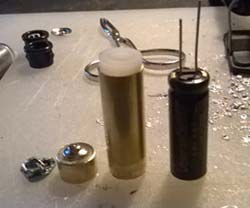Sometimes when working on a righteous hack, we get goosebumps while watching our code execute faster than we could ever possibly comprehend. Seeing the pixels of the LCD come alive, hearing the chatter of relays and the hum of fans…it’s an amazing thing what electricity can do. And it is equally amazing when you realize that it all started one hundred and thirty five years ago, when [Thomas Edison] changed the world forever with the first practical electric light bulb.
That bulb was lit by a Direct Current – the same thing that runs the computer you’re reading this article on. The same thing that runs many of the hacks you read about here on Hack a Day, and almost all electronic devices in your house. But somewhere in the mix must exist a device that changes the Alternating Current from your wall outlet to the needed DC. Why? Why is it that we transport electricity as AC only to convert it to DC in our homes? You might answer:
“This argument was played out in the War of Currents back in the 1880’s.”
Indeed, it was. But that was a long time ago. Technology has changed. Changed so much to the point that the arguments in the War of Currents might no longer be valid. Join us after the break, where we rehash these arguments, and explore the feasibility of an all DC environment.

















